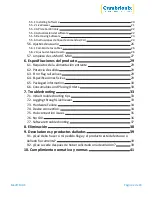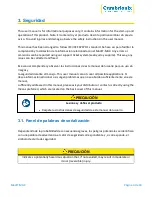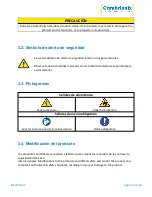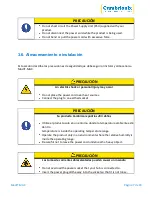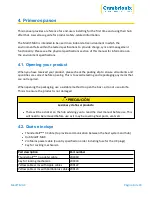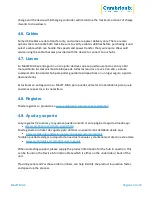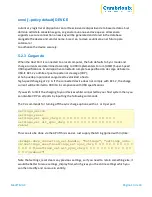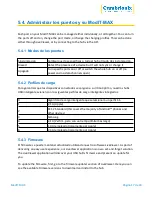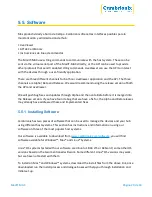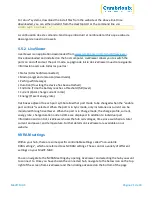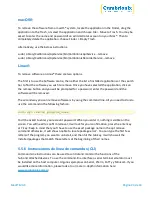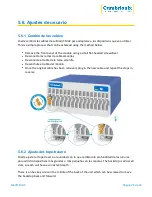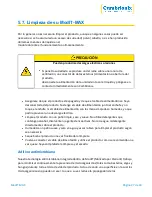
ModIT-MAX
Página 12 de 43
5.2. Using when connected to host
5.2.1 Conexión del hub a un equipo host
You can use either Thunderbolt™ host port on the rear of the hub to connect to your host
system; there are two ports on the rear, so you can use one port to connect the host and the
other port to daisy chain multiple hubs.
5.2.2 Authorising Thunderbolt™ hubs on Linux®
With Linux® systems, it is necessary to authorise/enrol the ModIT-MAX before it connects.
To do this, you will need to use "boltctl," which is used to control the Thunderbolt™ device
manager. "boltctl" is the command-line interface to interact with boltd, the system daemon
that manages Thunderbolt™ 3™ devices. Using "boltctl", input the following commands to
authorise and enrol your ModIT-MAX.
power [-t | --timeout seconds]
Power up the Thunderbolt™ controller. If the Thunderbolt™ controller is not in "native
enumeration mode", it can be completely powered down by the host firmware/BIOS. Los
sistemas compatibles cuentan con una interfaz para "forzar" la alimentación
supported systems, there is an interface to "force" power the Thunderbolt™ controller. Si se
admite, este comando solicitará al daemon que
supported, this command will request the daemon to do so. El daemon realizará un
seguimiento de todas las solicitudes del cliente y liberará la
anulación de la alimentación cuando
se libere la última solicitud.
authorize DISPOSITIVO
Autorizar un dispositivo actualmente no autorizado identificado a través de su ID única (uuid)
de dispositivo. Si se dispone de una clave almacenada en la base de datos, se utilizará,
key is stored in the database, it will be used, given the security level of the domain
conexión segura del dispositivo. Utilice la lista de boltctl para averiguar el uuid de un
dispositivo.



